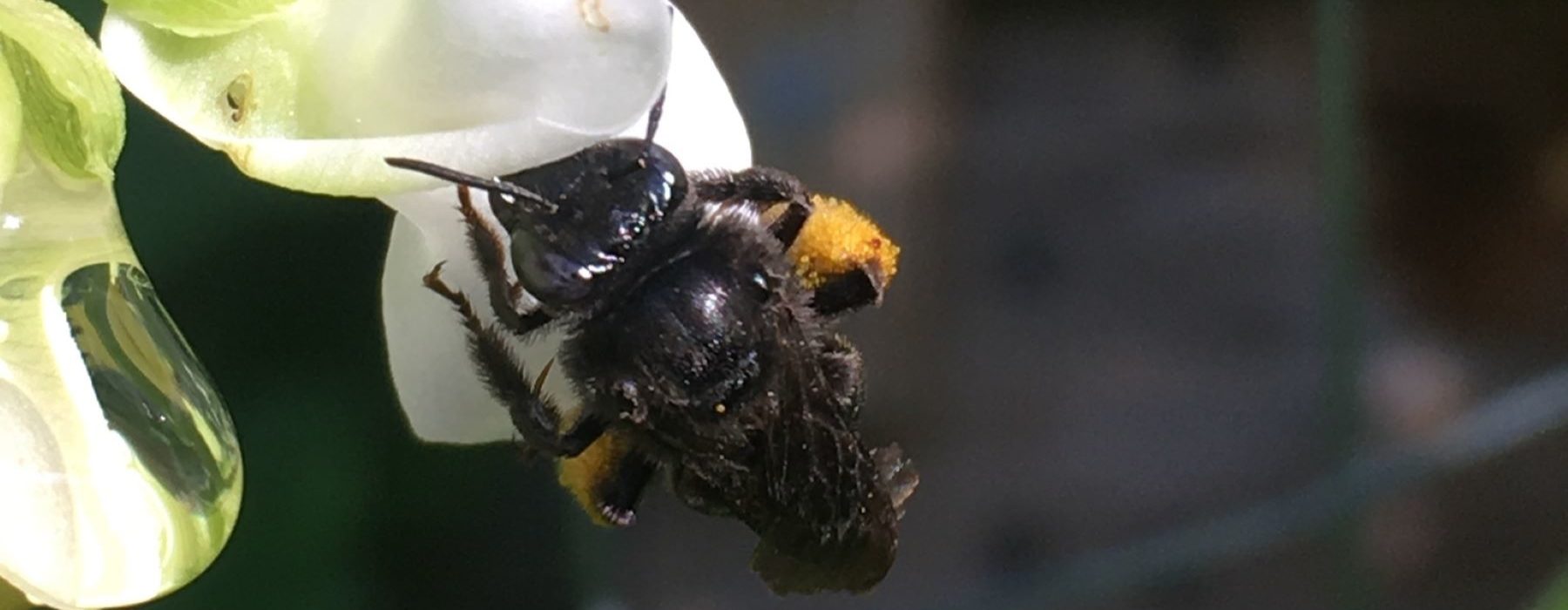As June fades into July, summer strengthens its grip on the landscape, bringing with it sweltering days and billowing thunderheads. It also means increased bee activity after a month with relatively little. In terms of diversity of genera, July may be the best month for bee watching in Vermont. In fact, all approximately 35 genera are likely flying this month. And unlike April and May, there are numerous species that are identifiable from photos, so there’s lots to look for! Don’t worry if you can’t find them all—many of these bees will still be out into August.
Here’s a list of the flowers blooming in July with potential specialists:
Thistles (especially the large flowered species) – Thistle Long-horned Bee (Melissodes despondus) which is relatively common, at least in the Champlain Valley. Also Osmia texana which is known from only one record (Centennial Woods in 1979).
Native Loosestrifes (primarily Whorled and Fringed) – host to the rare genus of Oil-Collecting Bees (Macropis) found in Williston and Addison last summer (after many hours of searching).
Fireweed (Chamaenerion angustifolium) – Megachile lapponica which has not yet been recorded in Vermont.
Pickerelweed – Two specialists in Vermont: Dufourea novaeangliae which is widespread and common, and Melissodes apicatus found last year in the larger marshes of Chittenden County.
American Chestnut – Likely host for Andrena rehni. This species is probably not identifiable from photos, but if you know of any chestnuts that are at least mostly American genetics, old enough to flower, but short enough to be reachable with a net, Spencer would be interested in collecting off them.
Hollies – Attractive to a large number of bees, and host to Colletes banski, a relatively rare species—look for a honeybee-sized bee with a heart-shaped face.
Evening Primroses (Oenothera) – Lasioglossum oenotherae a relatively large Lasioglossum with large ocelli for flying at low light when primroses are blooming.
And here are the distinctive non-specialists of interest to keep a lookout for:
Two-spotted Long-horned Bee (Melissodes bimaculatus) – A large, hairy bee that is all black with two tiny white spots. So far only known from the Champlain Valley, but may be in other warm areas as well.
Parallel-striped Sweat Bee (Halictus parallelus) – A seemingly rare species known from Milton (1969) and behind the Burlington Airport (2019). A large Halictus with distinctively dark wings.
Calliopsis Cuckoo Nomad Bee (Holcopasites calliopsidis) – A tiny cleptoparasite of the Eastern Miner Bee (Calliopsis andreniformis) that looks more like a fly than a bee. Both species are fond of highly disturbed areas with bare soil and short weedy plants.
As the warmer weather and longer days encourage you to spend more time outside, take some time to stop and marvel at Vermont’s bees. And make sure to add your observations to the Vermont Atlas of Life on iNaturalist!
Finally, if you can’t get enough bee info, Spencer is teaching an online class through North Branch Nature Center, that might be of interest: https://northbranchnaturecenter.org/naturenow/.
Happy hunting!







